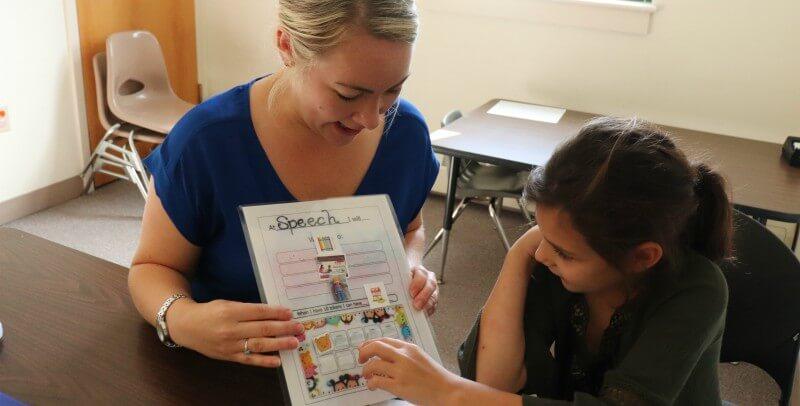As schools become better at detecting signs of communication disorders in young children, the demand for speech-language pathologists (SLPs) continues rising nationwide. According to the U.S. Office of Special Education Programs, speech or language disabilities affect 65% of special education students age 3-22 years old. Schools must comply with a federal mandate to provide special education services for these students.
SLPs help students in a variety of ways. They evaluate and diagnose communication and swallowing disorders, help children learn to communicate clearly and grammatically, collaborate with reading specialists to support students with literacy difficulties and educate family members and teachers who care for children with disabilities. SLPs are in high demand because there aren’t enough of them to keep up with the need. Shortages vary across the nation, but rural areas in particular face challenges recruiting qualified candidates.
That’s the impetus behind the Interprofessional Education Project, which supports the interdisciplinary preparation of graduate students specializing in early childhood speech-language pathology. A $1.25 million personnel preparation grant from the U.S. Department of Education allows UVM to provide tuition for students who might not otherwise be able to attend graduate school to participate, pursuing master’s degrees in speech-language pathology and early childhood special education.
Dr. Shelley Velleman, chair of the Department of Communication Sciences and Disorders, co-leads the project with Dr. Jennifer Hurley, associate professor of Early Childhood Special Education. Faculty and candidates across the two graduate programs at UVM collaborate on coursework focusing on childhood special education, early intervention and alternative communication for children with speech-language difficulties.
“Children with complex special needs require services from multiple specialists. They are better served by professionals who understand each others' areas of expertise and can collaborate to maximize the child’s growth,” said Velleman. “Pediatric SLPs and early childhood/early intervention special educators who have been co-trained will be able to work together more smoothly and effectively, which will mean that the children will learn and develop more quickly and be able to participate in their classrooms and their communities more fully.”
In addition to coursework, the students visit a neonatal intensive care unit together and get hands-on experience with the assistive technology devices that support the play, feeding, mobility and communication of young children with disabilities. They also participate together in simulations with role-model clients and families — portrayed by actors — and train to develop and discuss recommendations with their clients’ parents.
“They practice collaborating on presenting the results from both fields to the parent and working together to make the interview helpful and supportive for the parent. Thus, they will learn together how to work together for the benefit of children and their families,” Velleman said. “Experiences like this have much more lasting impacts than any lecture or textbook could have.”
